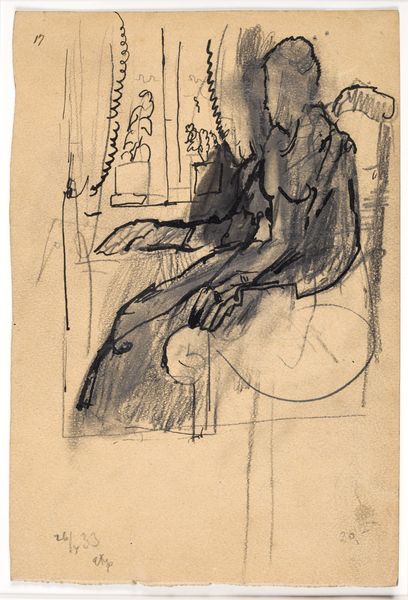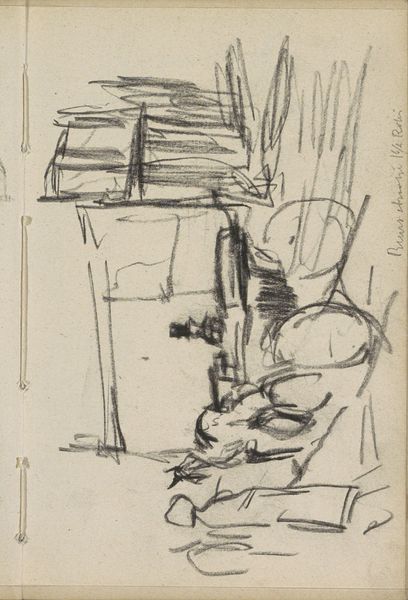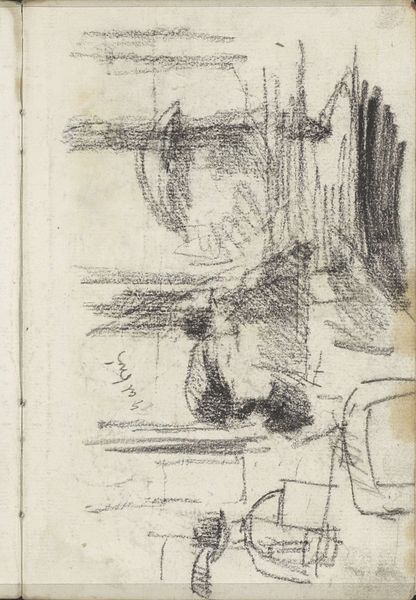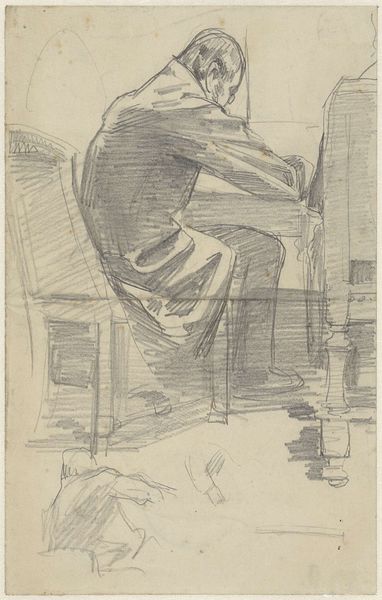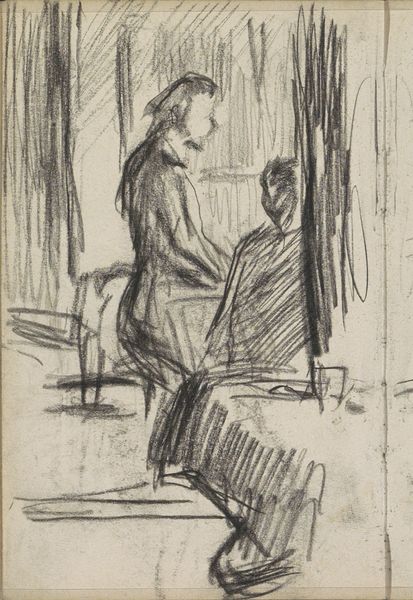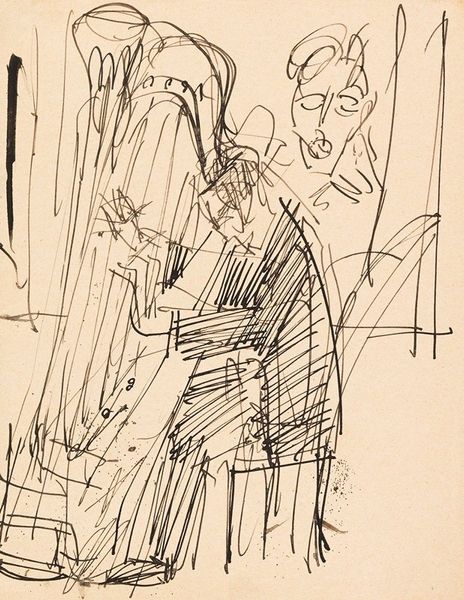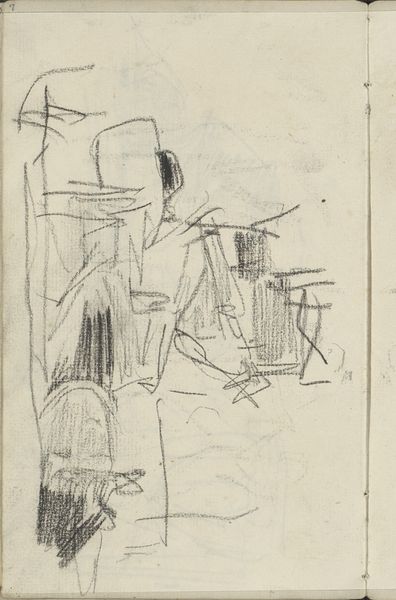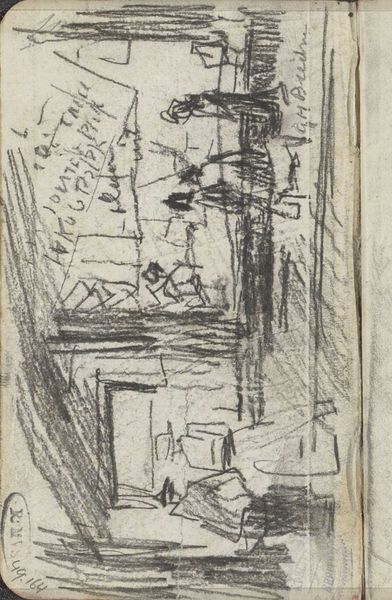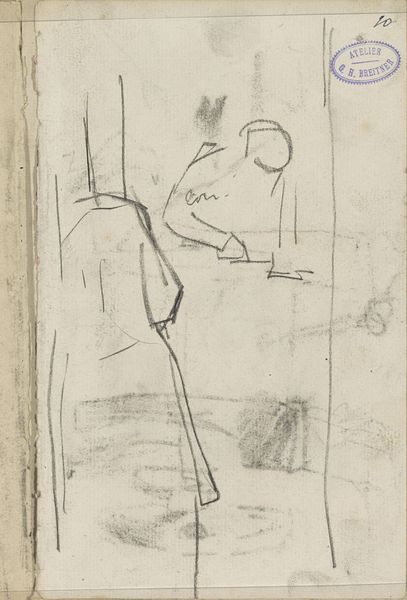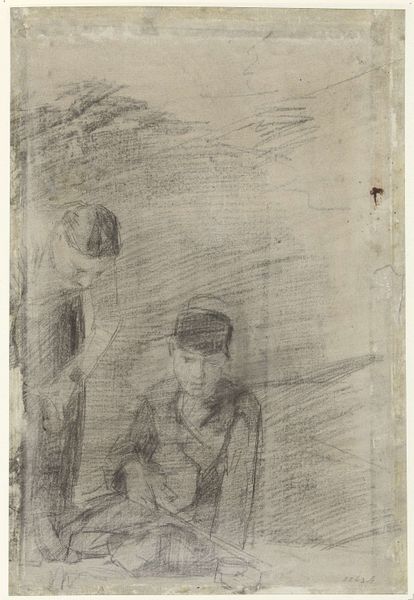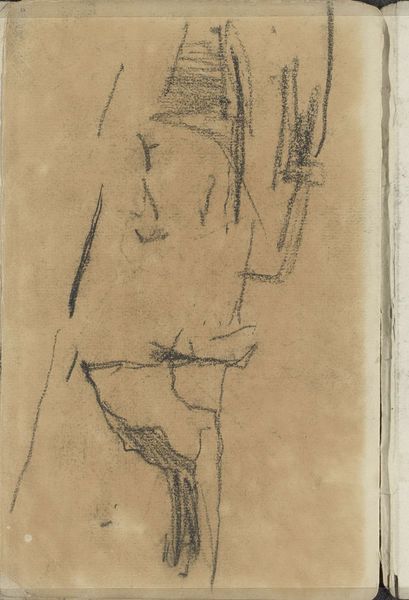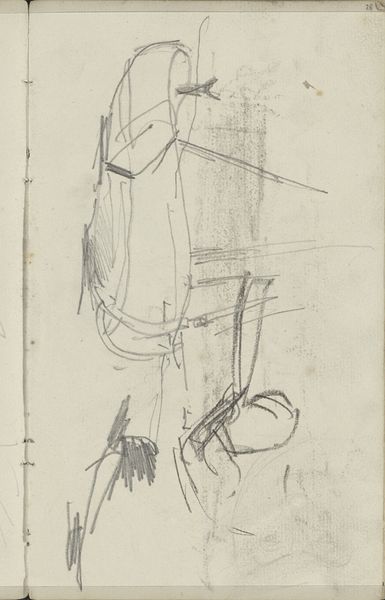
Copyright: Rijks Museum: Open Domain
Editor: Here we have Breitner’s “Figuurstudies en een gezicht in Amsterdam,” made sometime between 1900 and 1923. It's a pencil drawing, a study really, and I’m struck by how unfinished and fleeting it feels, almost like a memory. What stands out to you? Curator: The quick, layered strokes evoke a sense of immediacy and a world in constant flux. Consider the figures; they appear almost spectral, emerging from and dissolving back into the urban environment. Breitner uses them to embody the ephemeral nature of modern life itself. Don't you find that fascinating? Editor: I do. The figures seem anonymous, swallowed up by the city. Do you think that's intentional, to show a loss of identity? Curator: Perhaps not a loss, but a transformation. Think of Amsterdam at the turn of the century: industrialization, urbanization… new identities were being forged in the crucible of the modern city. The sketch isn't just a portrait; it's a reflection of societal shifts, captured in the tension between individual and environment. What do you make of the cityscape sketched in the background? Editor: It seems so fragile, barely there. Almost like a dream of Amsterdam rather than Amsterdam itself. Curator: Exactly! Breitner uses these architectural outlines to frame the human figures, underscoring the constant dialogue between our inner selves and the spaces we inhabit. Each stroke speaks volumes, reflecting cultural anxieties and psychological realities. Editor: I see it now; the symbolism is subtle but pervasive. It really brings a different depth to what I initially saw as just a sketch. Curator: Precisely! Art unlocks narratives woven into our collective consciousness; studying its symbolism reveals the stories we tell ourselves and others.
Comments
No comments
Be the first to comment and join the conversation on the ultimate creative platform.

